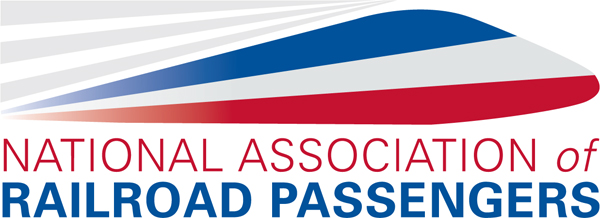Reports and Stats
A library of documents drafted by the Association focusing on Amtrak business lines and public transportation policy.
NARP President's Report: What the FAST Act Means (March 2016)
NARP President Jim Mathew's report on the FAST Act, presented to members of the Mid-Atlantic Division and ESPA.
Long Distance Trains: A Foundation for National Mobility
A signature NARP White Paper on the efficiency and critical importance of the often maligned long distance national network passenger trains
Fact Sheet: Trains & the Economy
2015 edition of NARP's analysis of the economic benefits of passenger rail investment. Shows how investing in trains promotes greater mobility and economic development, generates new jobs, encourages energy efficiency and enhances Americans’ standard of living.
New York–Buffalo– Cleveland–Chicago Corridor Improvement Proposal
Like so many parts of the country, a corridor full of potential is served by one train a day, the Lake Shore Limited, leaving much of its population literally in the dark. Really, there should be at least four trains a day-- and this is why
Transport Cost Analysis
A Summary of Victoria Policy Intitute's excellent dismemberment of the oft unquestioned concept that current North American transportation choices are the result of free market outcomes
Five Reasons Conservatives Should Support Passenger Trains
Yes, public investment in passenger trains advances many key elements of the Conservative Agenda.
Tax Policy and Transportation: A Case Study in Michigan
"One unforeseen problem with both Amtrak in general and the state supported trains was that they were funded by annual appropriations with no dedicated operating or capital funding. This meant an annual fight for survival against “free-market” advocates who forgot about the massive subsidies to highways which caused the decline in passenger trains in the first place."
Freedom and Transportation
"So while effective policy making is about enabling people access to choice, it seems that American policy makers have gotten myopic the role they play in enabling these choices. The boom in automobile use necessarily led to more roads and highways; but at some point legislators forgot that this growth didn’t occur in a vacuum, and their road legislation played a key role part in encouraging it. Returning balance to the U.S. transportation network means investing in the modes we’ve neglected, like passenger trains and transit. Not just for the benefits specific to passenger trains. By balancing investment in infrastructure, we can develop a clearer understanding of the role government plays in directing the movement of people and goods, and move away from a view of roads and highways as a natural extension of the free market."
Sleeping Car Revenues Keep Operating Subsidies Low
Sleeping Car revenues are pure gravy for Amtrak. The cost of operating solely coach long distance trains would be far greater than what is currently paid now. Furthermore, there is pent-up demand for sleeping car service wherever it is offered, indicating a great need to expand such operations. To do so would only help the bottom line of the railroad.
"Food For Thought" as published in Railway Interiors International
"Studies claiming that Amtrak’s lounge and dining car services “lose” money make the mistake of analyzing them as restaurants. That’s the wrong business model. The correct model can be found in the hospitality industry – bed and breakfast operations and that part of the hotel industry that has followed their lead. Operators provide food and beverages free of charge. While this strategy would put any restaurant out of business quickly, it makes economic sense in the hospitality industry because food & beverage service helps sell something of greater value – rooms. Similarly, in the passenger train business, lounge and dining car service helps sell something of greater value – tickets."
